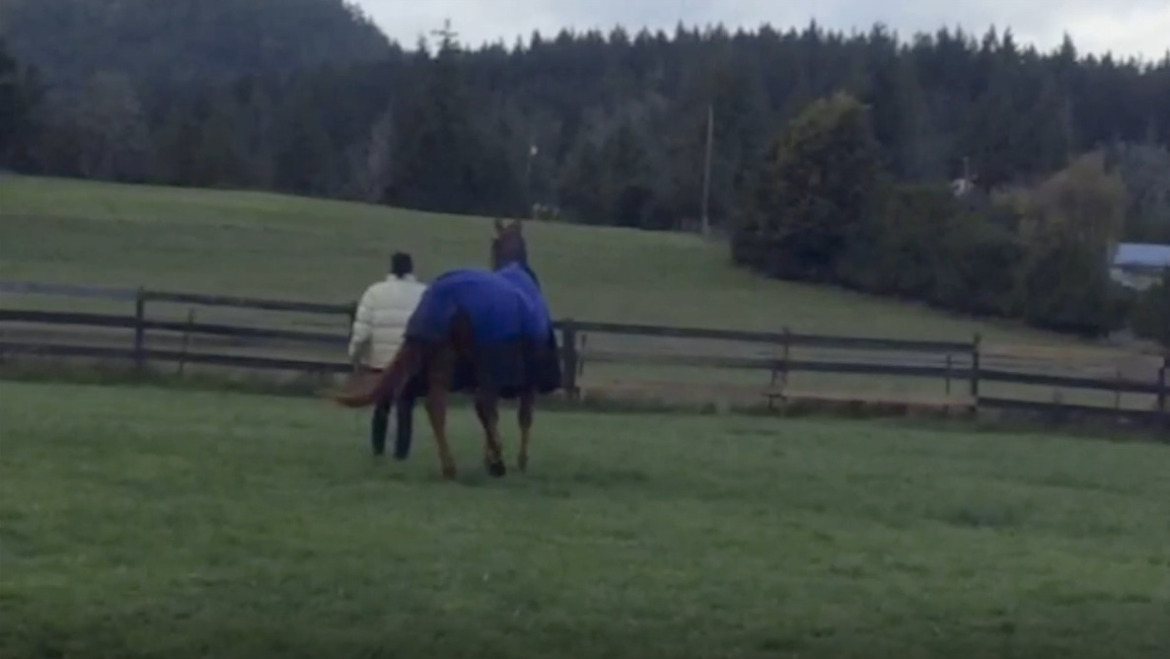June Case of the Month: A Sideways Problem
Roger was a 27 year old Tb gelding that developed acute, progressive hind end instability over several days. He was first noted to seem more stiff in his hind end than usual and was placing his hind limbs abnormally. He was also noted to bump into the fence when coming in from turnout which was highly abnormal for him. Roger’s owner booked an appointment for the following day and the gait continued to progressively worsen to the point that Roger was in a dog sitting position on presentation the next day. Roger was helped to stand and noted to be showing a “sidewinder” gait which can be best described as a “crab-walking” or “drifting” hind end that sways to the side of the body while the forelimbs remain in place. This syndrome is not a diagnosis, but instead a description of the gait which can be caused by many different neurologic and/or orthopedic conditions. In a recent retrospective study on the syndrome, horses of different breeds and genders were identified with a mean age of 19 years. Extensive diagnostics revealed the most common neurologic cause to be compression of the spinal cord vertebrae with various other neurologic and or musculoskeletal causes identified. Treatments are directed at the diagnosis when possible; though, often in the field situation transportation for advanced diagnostics is not safe and a definitive cause can not be identified. As such, treatment involves strong anti-inflammatory medications, rest, and supportive care to try and minimize risk of secondary injury. Unfortunately, the prognosis in these cases is poor with a nearly 80% euthanasia rate. Even when the cause can be identified, response to treatment is limited and there is a high risk of further progression, injury to the horse, or injury to handlers. It does appear to be a condition of older horses, with younger horses being able to experience many of the same conditions, but without the typical gait. Further research may identify why we see this specific gait in older horses. While it can be scary when a horse develops significant loss of control over its hind end, the most important thing is to ensure safety of those around, seek veterinary care, and try to keep the horse calm. Luckily, this syndrome is relatively rare, but if you do find yourself needing help, please do not hesitate to reach out to the Swiftsure team who is here to help you help your horse however we can.
More can be read on the syndrome here: https://equusmagazine.com/news/causes-of-sidewinder-syndrome
The referenced paper is as follows: Aleman, M, Berryhill, E, Woolard, K, et al. Sidewinder gait in horses. J Vet Intern Med. 2020; 34: 2122– 2131. https://doi.org/10.1111/jvim.15870

